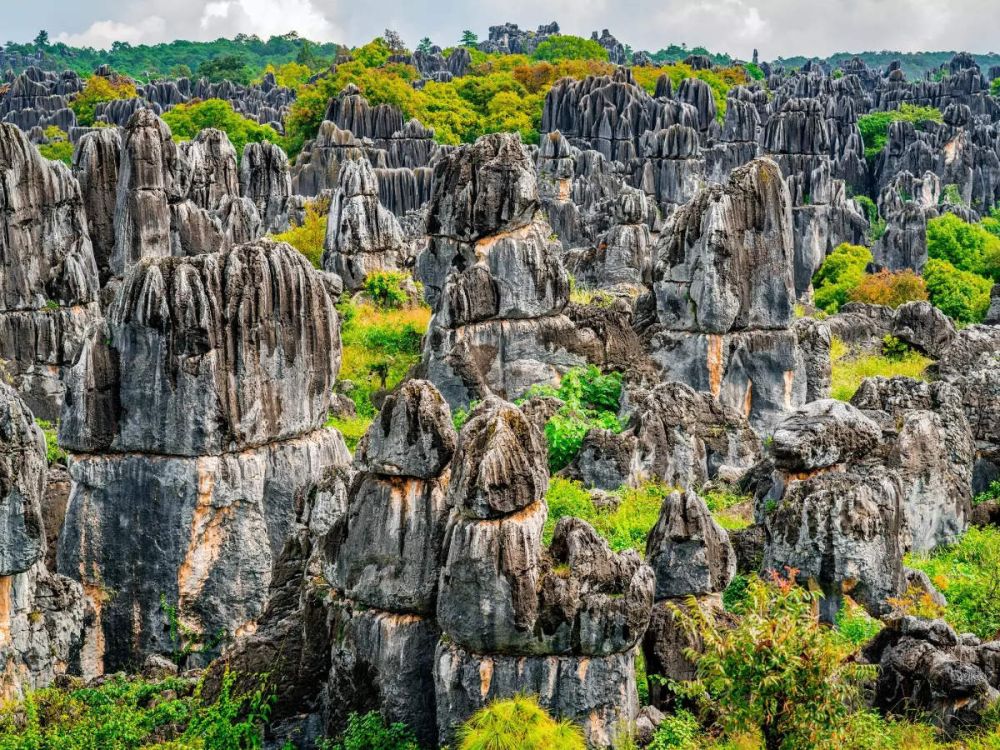

The Stone Forest, or Shilin in Mandarin, located near Kunming in China's Yunnan province, is an area steeped in both natural wonder and cultural significance. This majestic landscape of karst formations spans an area of over 400 square kilometers, presenting a dramatic, otherworldly tableau of tall rocks that resemble a forest made of stone. The Stone Forest is a testament to the power of natural processes and has been a site of fascination for both locals and travelers alike for centuries.
The Stone Forest has been a notable site for thousands of years, with records of its significance dating back to the Ming Dynasty. The area was revered by the local Sani people, an ethnic minority group, for its aesthetic and spiritual value. It has been a destination for pilgrimages and is intertwined with local legends and folklore. The fascination with the Stone Forest has only grown with time, evolving from a local curiosity to an international tourist destination.
Tourism began to develop more formally in the latter half of the 20th century. Following the establishment of the People's Republic of China, the government recognized the potential of the Stone Forest as a tourist attraction. In 1982, the Stone Forest was declared a National Scenic Area, and in the years that followed, infrastructure such improvements as walkways, signage, and visitor centers were established to accommodate the growing number of visitors.
In 2007, the Stone Forest achieved recognition by UNESCO as part of the South China Karst, a World Heritage Site. This acknowledgment brought an even greater influx of international visitors, eager to experience the natural grandeur of the rock formations. The site has since been integrated into broader tourism strategies that seek to combine cultural experiences with natural exploration, including visits to nearby minority villages, traditional performances, and local gastronomy.
In recent years, the Stone Forest has adapted to modern tourism trends by offering more immersive and interactive experiences. With the rise of eco-tourism, there has been an emphasis on preserving the delicate karst ecosystem while providing educational programs about the geological and biological significance of the area.
Visitor services have also gone digital. Tourists can access a wealth of information through their smartphones, including virtual tours and augmented reality (AR) applications that enhance the storytelling aspect of the Stone Forest. Social media has played a significant role in boosting the site's popularity, with striking images of the "stone trees" making the location a must-visit for photographers and influencers from around the globe.
Moreover, the tourism industry around the Stone Forest is embracing more sustainable practices. Efforts are being made to reduce the environmental footprint of tourism and to support local communities through responsible travel initiatives.
The Stone Forest continues to be a symbol of the beauty and diversity of China's natural landscapes. Its long history as a tourist destination and its ongoing evolution in line with contemporary trends ensure that it will remain an important and beloved attraction for generations to come.